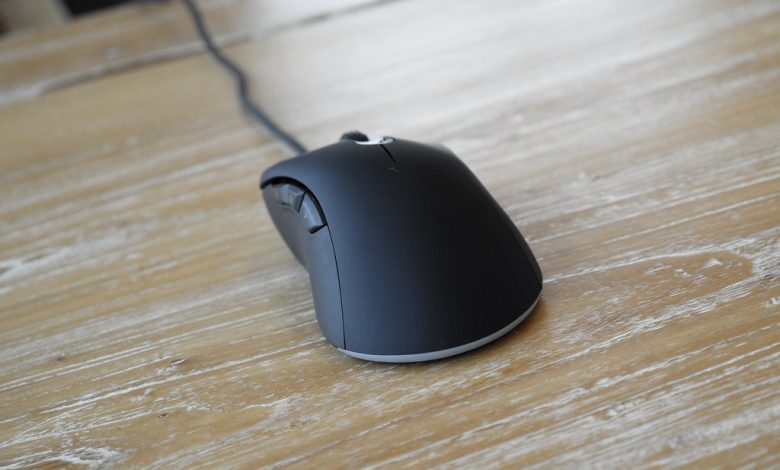How to Set Up Your Mouse for Maximum Comfort and Precision

You might think your current mouse setup is just fine, but even small adjustments can greatly improve your comfort and precision. By considering ergonomic designs, DPI settings, and button configurations, you can customize your experience to better suit your needs. It’s not just about the hardware; the way you position yourself and maintain your equipment plays an important role too. So, what specific steps can you take to make sure your mouse setup is optimized for your daily tasks?
Key Takeaways
- Choose an ergonomic mouse design with wrist support to enhance comfort during extended use.
- Adjust DPI settings according to your preference for improved precision and control.
- Configure mouse buttons to fit your workflow, enabling quick access and efficiency.
- Maintain a proper desk setup by aligning your monitor and desk height for optimal posture.
- Regularly clean your mouse and check cable condition to ensure smooth performance and longevity.
Choosing the Right Mouse
Choosing the right mouse is essential for your comfort and productivity. You’ll want to look for a mouse that features an ergonomic design, as this can notably reduce strain during long hours of use. An ergonomic mouse is shaped to fit the natural contour of your hand, promoting better posture and decreasing the risk of repetitive strain injuries.
Additionally, consider models with built-in wrist support; this feature helps keep your wrist in a neutral position, further alleviating discomfort.
If you’re interested in a more advanced option, you might explore a wireless mouse or a Bluetooth mouse for added convenience and mobility. When trying out different mice, pay attention to how they feel in your hand; the right fit can make all the difference. By investing time in selecting a mouse that meets these criteria, whether it be a gaming mouse, a Logitech model, or any other brand, you’ll enhance both your comfort and efficiency.
Adjusting DPI Settings
When it comes to optimizing your mouse for comfort and performance, adjusting the DPI settings is an essential step. DPI, or dots per inch, determines how far your cursor moves relative to your hand’s movement. By fine-tuning these settings, you gain better precision control and make speed adjustments that fit your workflow. Here’s how to adjust DPI effectively:
- Find Your Ideal DPI: Experiment with different settings, typically between 800 to 1600 DPI for general usage. If you’re using a gaming mouse, you may have additional options to explore.
- Use Software Tools: Most gaming mice come with software to customize DPI settings easily. Brands like Logitech and Razer offer intuitive interfaces for adjusting your mouse settings.
- Test During Use: Make adjustments while working on tasks to see what feels most comfortable and responsive. This is particularly important if you switch between different types of mice, such as a Bluetooth mouse or a wireless mouse.
Mastering your DPI settings can greatly enhance your overall mouse experience!
Configuring Mouse Buttons
After you’ve fine-tuned your DPI settings for peak control, it’s time to focus on configuring the mouse buttons to match your workflow. Start by utilizing button mapping through your mouse’s software customization options. This allows you to assign specific functions to each button, enhancing your efficiency.
Think about your finger placement and how your grip techniques affect your interaction with the buttons. Position your fingers comfortably on the mouse, ensuring easy access to frequently used buttons.
If you’re a gamer, consider exploring options for a gaming mouse that offers advanced button customization. You might want to map actions like crouch or reload for quick access. For productivity, assigning shortcuts like copy or paste can significantly streamline your tasks.
Additionally, if you prefer a more versatile setup, you can check out options for a wireless mouse that offers flexibility without the clutter of wires. These adjustments will improve your overall comfort while using the mouse and enhance your workflow efficiency.
Customizing Sensitivity Levels
Customizing sensitivity levels can significantly enhance your overall mouse experience, allowing for precise control tailored to your personal preferences. By adjusting these settings, you can fine-tune your grip techniques and adapt to your hand position for optimal comfort. Here are three key aspects to consider:
- DPI Settings: Selecting the right DPI for your needs is crucial. Higher DPI will provide quicker movements, ideal for fast-paced tasks, while lower DPI is great for precision control during detailed work. If you’re in the market for a new gaming mouse, consider one with adjustable DPI settings to enhance your gameplay.
- Acceleration: For consistent movement, it’s best to turn off mouse acceleration. This setting ensures that your cursor responds directly to your hand movements, providing a more predictable experience. Whether you’re using a Bluetooth mouse or a wired option, this adjustment can make a noticeable difference.
- Polling Rate: A higher polling rate minimizes lag, which is essential for a smoother experience, particularly during intense gaming or design work. Choosing a mouse with a high polling rate, such as those from reputable brands like Logitech or Razer, can significantly enhance performance.
Setting Up an Ergonomic Workspace
Creating an ergonomic workspace is essential for maintaining comfort and productivity during long hours of work or gaming. Start by adjusting your desk height so that your elbows are at a 90-degree angle when typing. Ideally, your wrists should remain straight, and your hands should float comfortably above the keyboard. To enhance your setup further, consider using a high-quality wireless mouse to reduce strain from wired connections.
Next, focus on chair position. Your chair should support your lower back, and your feet should rest flat on the floor. If your chair is too high, use a footrest to ensure proper posture.
It’s also important to keep your monitor at eye level to avoid straining your neck. By optimizing desk height and chair position, you’ll create a comfortable environment that reduces fatigue and enhances your overall performance. Additionally, investing in a reliable gaming mouse can significantly improve your efficiency and comfort during those extended sessions.
Finding Your Ideal Grip
Finding your ideal grip can make a significant difference in both comfort and performance, especially when using a high-quality mouse like those from Logitech or Razer. To achieve this, focus on these key aspects:
- Hand Positioning: Your hand should rest comfortably on the mouse, with your fingers naturally curved over the buttons. Avoid stretching or straining, particularly with wireless mice that offer greater flexibility for movement.
- Finger Placement: Position your index finger on the left-click button and your middle finger on the right-click. This allows for quick access without excessive movement, which is crucial during intense gaming sessions or productivity tasks.
- Grip Pressure: Apply light grip pressure to avoid fatigue. A relaxed hold promotes better control and precision, enhancing your overall experience with your gaming mouse.
Additionally, confirm your wrist has proper support to prevent strain. With the right grip, you’ll notice improved accuracy and reduced discomfort during extended use.
Regular Maintenance Tips
To maintain your mouse functioning smoothly, make it a habit to clean it regularly. This simple step can prevent dirt buildup and enhance your overall experience.
Also, don’t forget to check the condition of the cable to guarantee it’s not fraying or damaged, as this can affect performance.
Clean Your Mouse Regularly
Keeping your mouse clean is essential for both its performance and your comfort. Regular cleaning not only enhances precision but also contributes to preventive maintenance. Here’s how to do it right:
- Wipe the Surface: Use a microfiber cloth and a gentle cleaning solution to wipe down the exterior of your device, whether it’s a Wireless mouse or a Bluetooth mouse. This prevents grime buildup.
- Clean the Sensor: Carefully use a cotton swab to clean the sensor area. Dust can interfere with tracking performance, especially in high-performance models like a Gaming mouse.
- Remove Debris: Check for any debris under the buttons and around the scroll wheel. A can of compressed air can help dislodge stubborn particles, ensuring your mouse operates smoothly.
Regular maintenance can prolong the life of your device and enhance your overall computing experience. For more tips on different types of mice, visit MouseBD.
Check Cable Condition
A frayed cord can turn your smooth computing experience into a frustrating ordeal. To ensure prime mouse movement, regularly check the condition of your mouse’s cord. Look for any signs of wear, such as fraying or exposed wires. If you notice any damage, it’s best to replace the cord or the entire mouse to avoid connectivity issues or potential hazards. If you’re considering an upgrade, options like a wireless mouse can eliminate the hassle of cords altogether.
Good cord management also plays an essential role. Keep the cord organized and free from tangles to prevent strain on the wires, which can lead to damage over time. Use cord ties or clips to secure it neatly behind your desk.
Conclusion
To sum up, configuring your mouse for comfort and precision can greatly enhance your computing experience. Did you know that utilizing an ergonomic mouse can reduce the chance of repetitive strain injuries by up to 50%? By selecting the appropriate design, fine-tuning DPI settings, and customizing buttons to match your workflow, you’ll not only boost your productivity but also safeguard your health. Routine upkeep guarantees your gear remains in peak condition, allowing you to work effectively and comfortably.








